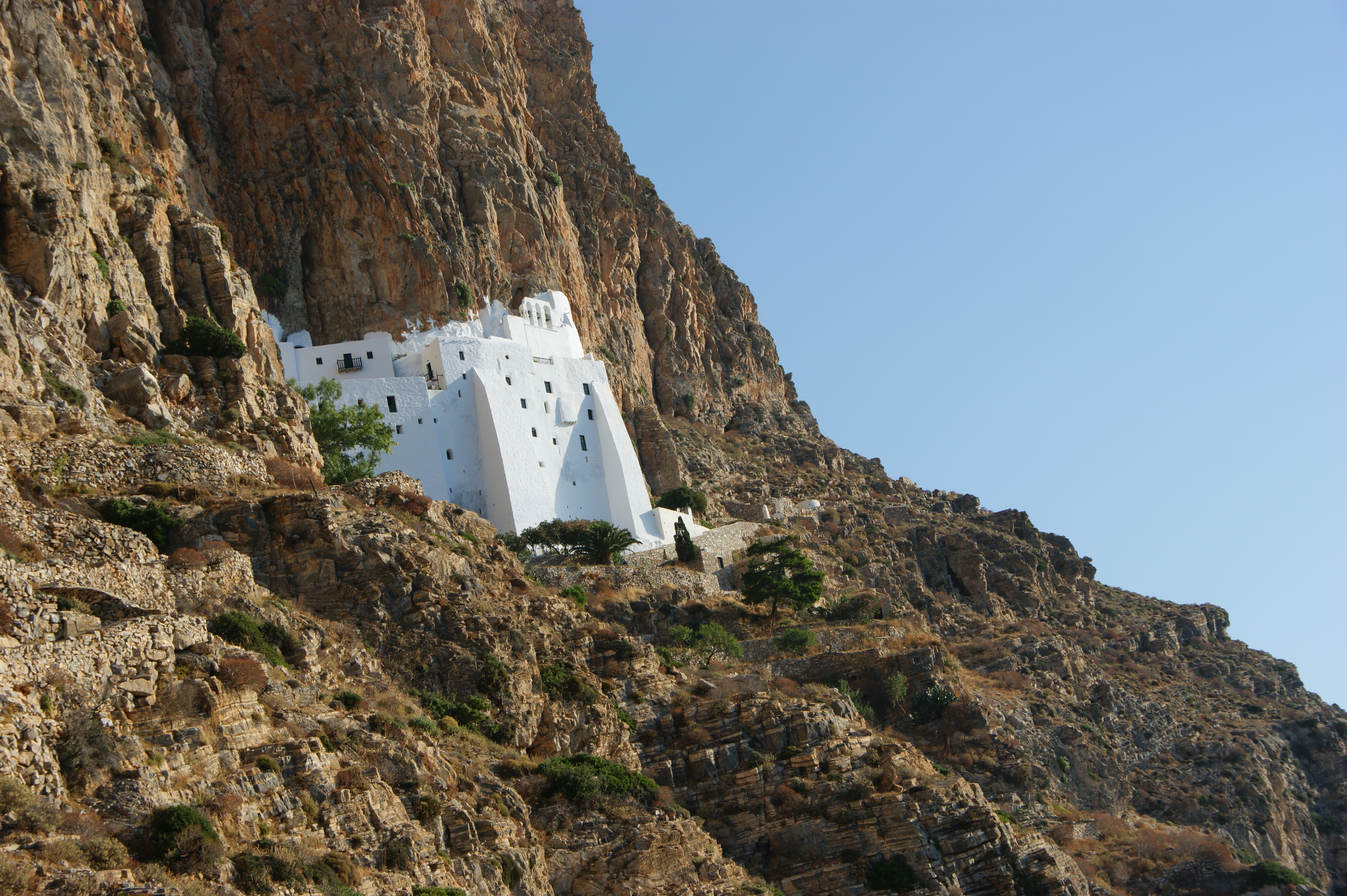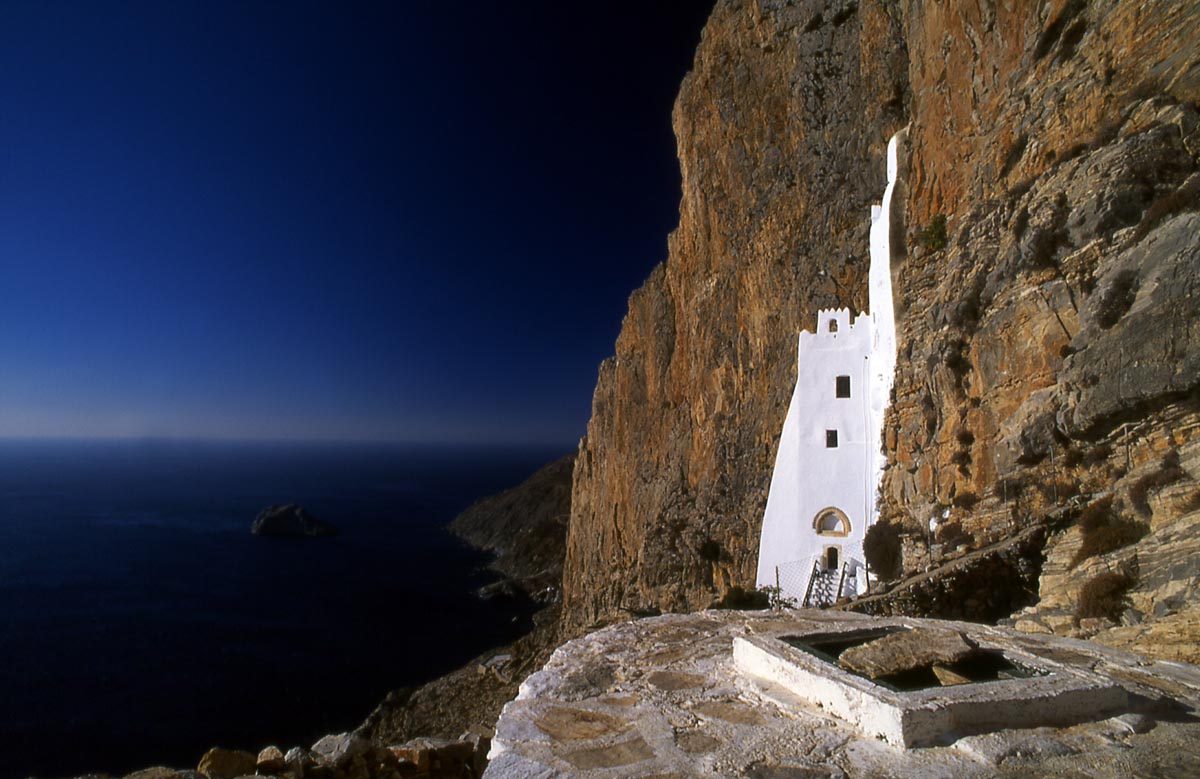This is the most famous attraction of Amorgos. It is situated in the Southern harbourless coast, nestled within thorny rocks, visible only from the vast sea that lies beneath the 300 meters high cliffs. The white façade of the church is in harmony with the steep rocks. If you go near, you will notice the white geometric designs and the strict linear outline of the building. As the sunlight falls on the church, an illusion of a multi-level surface is created.
The building is 40 m. long and no more than 5 m. wide. Since it is that narrow, the eight levels- "floors" do not meet anywhere. In the labyrinthine interior you will see Byzantine type arches (from 1296 – 1537: the years of the Venetian rule) built with stones or granite from Milos. The numerous cells of the monks, the bank, the galleys, the bakeries, the warehouses, the wine press, the cisterns and the wells are all wedged into the rock that is transformed into a functional construction; a wondrous functional sample of anonymous folk architecture.
In the small, single-aisled church you will find, among others, the living testimony of the local oral tradition concerning the origin of Chozova (or Chozovo) Palestine: two inscribed images of the Chossoviotissa or ΧΩΖΗΒΙΤΙCΑΣ, and the iron chisel of the master builder that functions as proof that this was the exact position appointed by Virgin Mary to build the temple. Concerning the history of the monastery important information is also given by the silver inscription on the cherubs, which states that "it was renovated by Alexios Komninos the Great," the Emperor of Byzantium (from 1081 to 1118).
The name Hozoviotissa, truthful testimony of the importance of the local oral tradition, was created by a combination of "Chozivitissa" or "Kozivitissa" from the place Choziva or Koziva of the Holy Land (in Wadi Qilt Jericho). According to written testimony from the Byzantine periods, significant orthodox monasteries existed there back in the first Christian times. Local oral tradition has it that in the years of Iconomachy (8th and 9th century) the painting of Virgin Mary arrived at the cove of Agia Anna.
The dating of the monastery is inextricably bound with the name Hozoviotissa and this is mainly based on oral tradition. The narratives of the Byzantine storytellers (mainly Theofanous) as well as the study of historical events of the geographical area of the Mediterranean and Palestine provided useful insight concerning the dating of the first building back in the 9th century.




